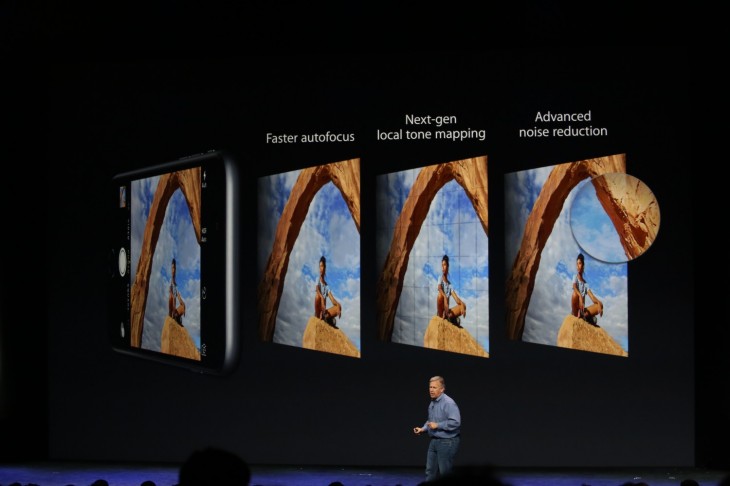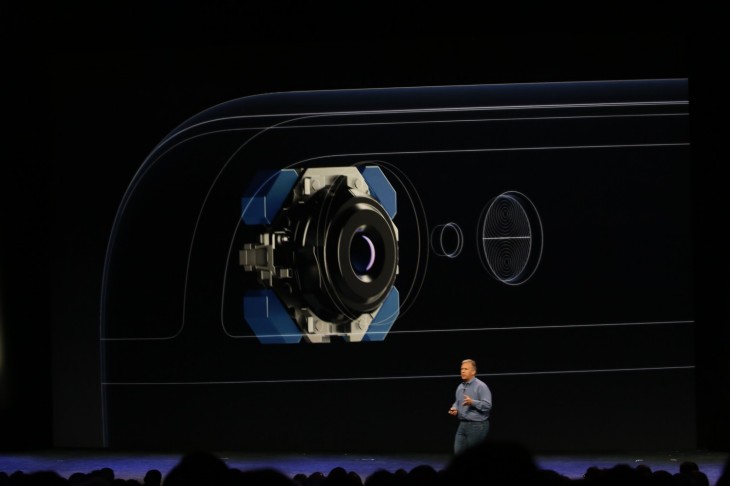
Apple has announced that the new camera for the iPhone 6 models has the familiar 8 megapixel iSight camera with an ƒ/2.2 aperture, but that it sports an all-new Focus Pixels sensor that senses light quickly for swift auto focus.
Apple says it “phase detection focus” Focus Pixels augment autofocus, skin tones, facial recognition, and macro photography.
Camera improvements, powered by the iPhone’s new 64-bit A8 chip, also include an improved lens and image stabilization, face detection and blink detection while otherwise maintaining the same megapixel count as before. The cameras sport a five-element lens and a new image signal processor that Apple says vastly improves performance.
Apple says, altogether, the phone itself has a 25 faster CPU performance and up to 50 percent faster graphics, compared with the previous high-end 5s model, all of which help camera performance.
In addition to tone mapping and advanced noise reduction, the 5.5-inch iPhone 6 Plus has genuine DSLR-like optical image stabilization, while the 4.7-inch iPhone 6 model has digital image stabilization.
Optical image stabilization keeps videos and photos level even when your hand shakes because it actually moves the lens to automatically adjust and correct your image as you move the phone. The digital variety does something similar in software.
Both models have a “best shot” mode.
Panoramas can be taken at up to 43 megapixels on both models, while now there are both single shot HDR and HDR videos.
A new video encoder makes video available at 1080p at 30fps or 60fps as well as slo-mo video up to a whopping 240 fps. Video features also include time lapse and a new continuous autofocus.
You can even put the selfie camera in burst mode, if that’s something you care to do.
Those specs come against a backdrop of a curved glass retina HD display for both models. The iPhone 6 has a 4.7-inch display with a resolution of 1334×750 pixels and pixel density of 326 pixels-per-inch.
The iPhone 6 Plus, with a larger 5.5-inch display, has a resolution 1920×1080 pixels with pixel density of 401 pixels-per inch — a total of more than 2 million pixels. The iPhone 6 is 6.9 mm while the iPhone 6 Plus is 7.1 mm thick.
While some might be a tad disappointed that Apple chose not to up the megapixel count just a teensy bit — rumor had it that the new camera would go to 10, 13, or even 16 megapixels — it actually makes sense to add image stabilization and focusing improvements instead of adding bulk to the phone’s file system.
On the other hand, with iOS 8 iCloud integration, it’s likely that much of that memory burden will be lifted from the handset — some but not all.
➤ Apple
For all our coverage of this event, check out our Apple event hub.
Get the TNW newsletter
Get the most important tech news in your inbox each week.



